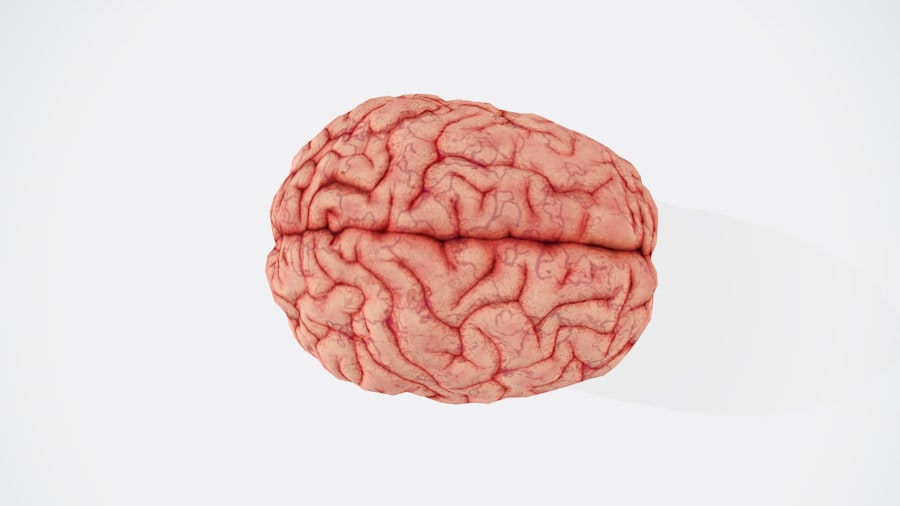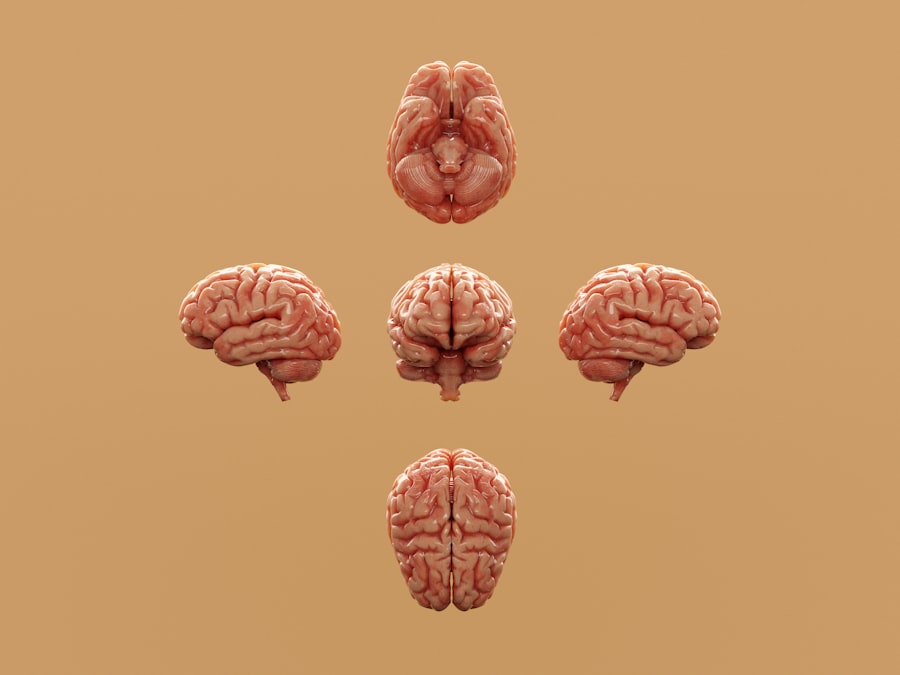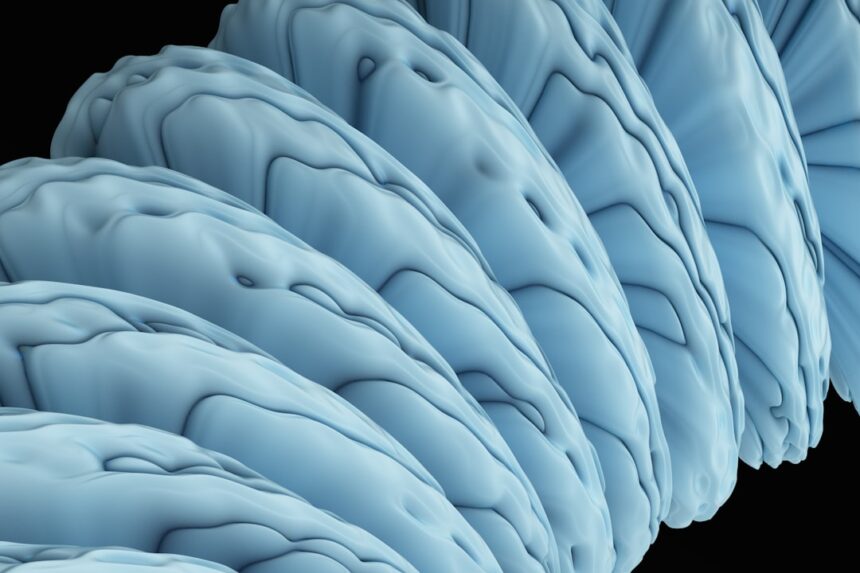The prefrontal cortex is a fascinating and complex region of the brain that plays a pivotal role in many aspects of human behavior and cognition. As you delve into the intricacies of this area, you will discover that it is not merely a collection of neurons but a sophisticated network that influences your thoughts, decisions, and emotions. This part of the brain is often referred to as the “executive center,” as it is integral to higher-order functions that distinguish humans from other species.
Understanding the prefrontal cortex is essential for grasping how you navigate the world, make choices, and regulate your emotions. In recent years, research has illuminated the significance of the prefrontal cortex in various cognitive processes. From decision-making to emotional regulation, this region is at the forefront of your mental operations.
As you explore its anatomy, functions, and implications for mental health, you will gain insights into how this remarkable part of your brain shapes your identity and influences your interactions with others. The journey into the world of the prefrontal cortex promises to be enlightening, revealing the profound impact it has on your daily life.
Key Takeaways
- The prefrontal cortex is a region of the brain involved in decision making, emotional regulation, executive function, and more.
- The prefrontal cortex is located at the front of the brain and is responsible for higher-level cognitive functions.
- The prefrontal cortex plays a crucial role in decision making by integrating information from various brain regions and weighing the potential outcomes of different choices.
- Emotional regulation is a key function of the prefrontal cortex, helping to control and modulate emotional responses to stimuli.
- The prefrontal cortex is essential for executive functions such as planning, problem-solving, and cognitive flexibility, and its development and maturation continue into early adulthood.
Anatomy and Structure of the Prefrontal Cortex
The prefrontal cortex is located at the front of the brain, occupying a significant portion of the frontal lobes. It is divided into several regions, each with distinct functions and connections. As you examine its anatomy, you will find that it encompasses areas such as the dorsolateral prefrontal cortex, ventromedial prefrontal cortex, and orbitofrontal cortex.
Each of these subdivisions plays a unique role in cognitive processing, emotional regulation, and social behavior. The intricate structure of the prefrontal cortex is characterized by a dense network of neurons and synapses. This complexity allows for sophisticated communication between different brain regions, facilitating the integration of information necessary for decision-making and self-control.
The prefrontal cortex is also rich in connections to other parts of the brain, including the limbic system, which is involved in emotional processing. This interconnectedness underscores the importance of the prefrontal cortex in coordinating cognitive and emotional responses, making it a central hub for your mental activities.
Role of the Prefrontal Cortex in Decision Making

When it comes to decision-making, the prefrontal cortex serves as your brain’s command center. It enables you to weigh options, consider consequences, and make choices that align with your goals and values. This region is particularly active when you face complex decisions that require careful thought and deliberation.
As you engage in problem-solving or evaluate potential outcomes, the prefrontal cortex synthesizes information from various sources, allowing you to arrive at informed conclusions. Moreover, the prefrontal cortex plays a crucial role in impulse control and self-regulation. It helps you resist immediate temptations in favor of long-term benefits, guiding you toward more rational choices.
For instance, when deciding whether to indulge in a treat or stick to a healthy diet, your prefrontal cortex weighs the immediate pleasure against potential health consequences. This ability to delay gratification is essential for achieving personal goals and maintaining overall well-being.
Emotional Regulation and the Prefrontal Cortex
| Emotional Regulation and the Prefrontal Cortex | Metrics |
|---|---|
| Emotional Regulation | Ability to manage and respond to an emotional experience in a healthy way |
| Prefrontal Cortex | Part of the brain responsible for decision making, problem solving, and controlling emotional responses |
| Neuroplasticity | The brain’s ability to reorganize itself by forming new neural connections |
| Emotion Dysregulation | Difficulty in managing and responding to emotional experiences, often linked to prefrontal cortex dysfunction |
Emotional regulation is another critical function of the prefrontal cortex. This region helps you manage your emotional responses by modulating activity in other brain areas associated with emotions, such as the amygdala. When faced with stressful situations or intense feelings, your prefrontal cortex acts as a regulatory mechanism, allowing you to respond thoughtfully rather than react impulsively.
Through emotional regulation, you can navigate social interactions more effectively and maintain healthier relationships. For example, when experiencing anger or frustration, your prefrontal cortex enables you to pause and reflect before responding. This capacity for self-control not only enhances your emotional well-being but also fosters better communication and understanding with others.
By mastering emotional regulation through the prefrontal cortex, you can cultivate resilience and adaptability in the face of life’s challenges.
Executive Function and the Prefrontal Cortex
Executive function encompasses a range of cognitive processes that are essential for goal-directed behavior. The prefrontal cortex is at the heart of these functions, which include planning, organization, attention control, and working memory. As you engage in tasks that require focus and strategic thinking, your prefrontal cortex orchestrates these processes to help you achieve desired outcomes.
For instance, when working on a project or preparing for an exam, your prefrontal cortex enables you to prioritize tasks, allocate resources effectively, and monitor your progress. This ability to manage multiple cognitive demands simultaneously is crucial for success in both academic and professional settings. Furthermore, executive function is not only about individual tasks; it also involves adapting to new situations and learning from experiences.
The prefrontal cortex’s role in executive function highlights its importance in shaping your ability to navigate complex environments and achieve long-term goals.
Development and Maturation of the Prefrontal Cortex

The development of the prefrontal cortex is a gradual process that unfolds over many years. In childhood and adolescence, this region undergoes significant changes as it matures and becomes more integrated with other brain areas. During this time, your cognitive abilities evolve, allowing for more sophisticated reasoning and decision-making skills.
The maturation of the prefrontal cortex is closely linked to your growing capacity for self-regulation and impulse control. Interestingly, research suggests that the prefrontal cortex continues to develop into early adulthood. This extended period of maturation may explain why young adults often exhibit different decision-making patterns compared to older individuals.
As you transition through various life stages, the ongoing development of your prefrontal cortex equips you with enhanced cognitive tools for navigating complex social situations and making informed choices.
Disorders and Dysfunctions of the Prefrontal Cortex
Dysfunctions in the prefrontal cortex can lead to a range of psychological disorders and behavioral issues. Conditions such as attention deficit hyperactivity disorder (ADHD), depression, anxiety disorders, and schizophrenia have been linked to abnormalities in this region. When the prefrontal cortex does not function optimally, it can disrupt your ability to regulate emotions, make sound decisions, or maintain focus.
Understanding these disorders highlights the importance of early intervention and treatment strategies aimed at supporting prefrontal cortex function. Therapeutic approaches such as cognitive-behavioral therapy (CBT) can help individuals develop coping mechanisms and improve executive function skills. By addressing dysfunctions in this critical area of the brain, you can enhance overall mental health and well-being.
Neuroimaging Studies of the Prefrontal Cortex
Advancements in neuroimaging techniques have provided valuable insights into the functioning of the prefrontal cortex. Functional magnetic resonance imaging (fMRI) and positron emission tomography (PET) scans allow researchers to observe brain activity in real-time as individuals engage in various cognitive tasks. These studies have revealed how different regions within the prefrontal cortex activate during decision-making processes or emotional regulation.
Through neuroimaging studies, scientists have also identified patterns of connectivity between the prefrontal cortex and other brain regions involved in emotion and cognition. This research has deepened our understanding of how information flows within the brain and how disruptions in these networks can contribute to mental health disorders. As you explore these findings, you’ll appreciate how technology has transformed our understanding of brain function and its implications for psychology and neuroscience.
Plasticity and Adaptability of the Prefrontal Cortex
One of the most remarkable features of the prefrontal cortex is its plasticity—the ability to adapt and reorganize itself in response to experiences and learning. This neuroplasticity allows for changes in neural connections based on environmental influences or personal experiences. As you engage in new activities or acquire new skills, your prefrontal cortex can rewire itself to accommodate these changes.
This adaptability has significant implications for personal growth and rehabilitation following injury or trauma. For instance, individuals who have experienced brain injuries may undergo rehabilitation programs designed to stimulate neuroplasticity in the prefrontal cortex. By engaging in targeted exercises that challenge cognitive functions, they can promote recovery and regain lost abilities.
Understanding plasticity empowers you to recognize that your brain remains capable of growth throughout life.
The Prefrontal Cortex in Aging and Cognitive Decline
As you age, changes occur within the prefrontal cortex that can impact cognitive function. Research indicates that older adults may experience a decline in executive function abilities due to age-related alterations in this region. These changes can manifest as difficulties with attention control, decision-making, and memory retrieval.
However, it’s important to note that not all aging individuals experience significant cognitive decline. Engaging in mentally stimulating activities—such as puzzles, reading, or learning new skills—can help maintain cognitive health by promoting continued activity within the prefrontal cortex. By prioritizing lifelong learning and mental engagement, you can support your cognitive abilities as you navigate the aging process.
Future Research and Implications for Understanding the Prefrontal Cortex
The study of the prefrontal cortex continues to evolve as researchers explore its complexities further. Future research may focus on uncovering specific neural mechanisms underlying decision-making processes or emotional regulation strategies. Additionally, advancements in neuroimaging technology will likely provide even deeper insights into how this region interacts with other parts of the brain during various tasks.
By recognizing its role in cognitive development and emotional well-being, educators can design curricula that foster executive function skills from an early age. Similarly, mental health professionals can develop targeted interventions that address dysfunctions within this critical area of the brain.
In conclusion, as you reflect on what you’ve learned about the prefrontal cortex—its anatomy, functions, development, and implications—you’ll appreciate its central role in shaping who you are as an individual.
By continuing to explore this area through research and personal experience, you can deepen your understanding of yourself and enhance your cognitive capabilities throughout life.
The prefrontal cortex is a crucial part of the brain involved in complex behaviors such as decision-making, social interactions, and personality expression. Understanding its functions can provide insights into various psychological phenomena and mental health conditions. For those interested in exploring more about the brain’s intricate workings, a related article can be found on the Unplugged Psychology website. This article delves into the broader aspects of psychological science and its applications. You can read more about it by visiting Unplugged Psychology.
FAQs
What is the prefrontal cortex?
The prefrontal cortex is the part of the brain located at the front of the frontal lobe. It is involved in a variety of complex cognitive, emotional, and behavioral functions.
What are the functions of the prefrontal cortex?
The prefrontal cortex is responsible for decision-making, social behavior, personality expression, and moderating social behavior. It also plays a role in working memory, attention, and inhibitory control.
How does the prefrontal cortex work?
The prefrontal cortex works by receiving and processing information from other areas of the brain, integrating this information, and then making decisions and initiating appropriate responses.
What happens when the prefrontal cortex is damaged?
Damage to the prefrontal cortex can result in a range of cognitive, emotional, and behavioral changes, including difficulties with decision-making, impulse control, and social behavior.
How does the prefrontal cortex develop?
The prefrontal cortex undergoes significant development during childhood and adolescence, with continued maturation into early adulthood. This development is influenced by genetics, environment, and experiences.




